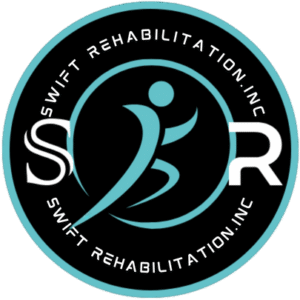Recovering from surgery, an injury, or a chronic health condition takes regular care, expert support, and the right environment. While many people rely on outpatient clinics, more patients are now turning to the benefits of in-home therapy. With this approach, licensed therapists bring professional treatment directly to your home, making recovery easier, more personalized, and highly effective.
For anyone searching for in-home rehabilitation services, this guide will walk you through what in-home therapy involves, the advantages it offers, the types of services available, and the key points to consider when choosing the right provider.

1. What Is In-Home Therapy?
In-home therapy allows licensed therapists to deliver professional rehabilitation right at the patient’s doorstep. Instead of making repeated trips to a clinic, individuals can receive care in the comfort of their own home. Being in a familiar environment often increases comfort, encourages active participation, and supports steady progress.
This type of service is especially beneficial for people with mobility issues, those recovering after surgery, or individuals managing chronic health conditions that make frequent travel challenging.
2. Why Choose In-Home Therapy Over Traditional Care?
Traditional rehabilitation centers play an important role in recovery, but they often come with challenges. Patients may need to travel long distances, arrange transportation, or adapt to settings that feel less personal. By choosing in-home rehabilitation services, many of these barriers are removed. Therapy sessions take place in the comfort of the patient’s own home, creating a familiar and safe space. This not only makes therapy more convenient but also boosts confidence and encourages long-term progress.
3. Benefits of In-Home Rehabilitation Services Near You
Receiving care at home provides unique advantages that enhance and complement clinic-based services:
A. Personalized Care: Therapists can assess the home environment and design exercises that fit into daily routines, making in-home therapy more practical and effective.
B. Convenience: Patients no longer need to travel, which makes it easier to stick to a consistent therapy schedule.
C. Comfort: Being in familiar surroundings reduces stress and helps patients stay engaged during sessions.
D. Family Support: Loved ones can take part in the process by observing sessions, learning helpful techniques, and encouraging the patient’s progress.
E. Consistency: Regular home visits ensure uninterrupted therapy, leading to faster recovery and steady improvement.

4. Types of Therapy Offered at Home
A trusted provider of in-home rehabilitation services, it delivers a wide range of programs tailored to meet the unique needs of each patient. Some of the most common options include:
I. Physical Therapy
Focuses on restoring movement, strength, and balance while easing pain. Therapists adapt exercises to fit the patient’s home environment, making them practical and effective.
II. Occupational Therapy
Supports patients in relearning essential daily activities such as dressing, preparing meals, and managing household tasks, which are vital for independent living.
III. Speech Therapy
Helps improve communication, swallowing, and cognitive-linguistic abilities, especially for those recovering from conditions like stroke, brain injuries, or developmental challenges.
Each therapy plan is carefully customized to match the patient’s health condition, personal goals, and home setting.
5. Conditions That Benefit from In-Home Therapy
Many individuals experience significant improvements through this personalized in-home therapy approach. It is especially helpful for those managing conditions such as:
- Orthopedic Injuries: Rehabilitation after fractures, joint replacements, or sports-related injuries.
- Neurological Conditions: Therapy designed for patients recovering from stroke, Parkinson’s disease, or multiple sclerosis.
- Chronic Pain: Targeted exercises and techniques to relieve long-term back, neck, or joint discomfort.
- Cardiopulmonary Issues: Guided recovery following heart surgery, heart attacks, or chronic respiratory problems.
- Speech and Language Disorders: Specialized support for challenges with communication, swallowing, or language after illness or injury.
- Age-Related Concerns: Assistance for older adults who face balance problems, mobility limitations, or memory and cognitive decline.
6. How to Select the Right Provider
Choosing the right provider for in-home rehabilitation services plays a vital role in achieving safe, consistent, and effective recovery. When evaluating your options, keep these key factors in mind:
- Qualified and Licensed Team: Make sure therapists are fully certified in physical, occupational, and speech therapy to guarantee professional care.
- Comprehensive Services: Select a provider that offers a range of therapy disciplines under one program, ensuring seamless and coordinated treatment.
- Customized Plans: Look for therapy programs designed around the patient’s specific health goals, medical condition, and home environment.
- Modern Techniques and Equipment: Providers who use up-to-date methods and safety measures can enhance results while reducing risks.
- Family Involvement: A supportive provider encourages caregivers to take part in sessions, helping patients stay motivated and engaged.
- Accessibility and Flexibility: Consider scheduling options, responsiveness, and the convenience of regular home visits.

7. The Role of Family in Recovery
Family support is one of the most important aspects of in-home therapy. When caregivers take part in the sessions, they gain skills to help with exercises and offer emotional encouragement. This active involvement creates a reliable support system that keeps patients motivated and consistent throughout their recovery journey.
In addition, therapists often guide family members on practical safety measures and home adjustments that prevent accidents. They also share strategies to promote independence, which helps patients maintain long-term progress and confidence in daily life.
8. Conclusion
Choosing the right rehabilitation path is vital for lasting recovery and a better quality of life. While clinic-based programs remain valuable, in-home therapy stands out for its convenience, personalized care, and supportive environment. Patients seeking in-home rehabilitation services gain the benefit of licensed professionals who bring therapy directly into the comfort of their homes.Swift Rehabilitation, based in Maryland, demonstrates how expert therapists can deliver customized physical, occupational, and speech therapy designed around each patient’s unique needs. With their patient-focused approach, they ensure safe, effective, and compassionate care. To explore their services, visit Swift Rehabilitation.




